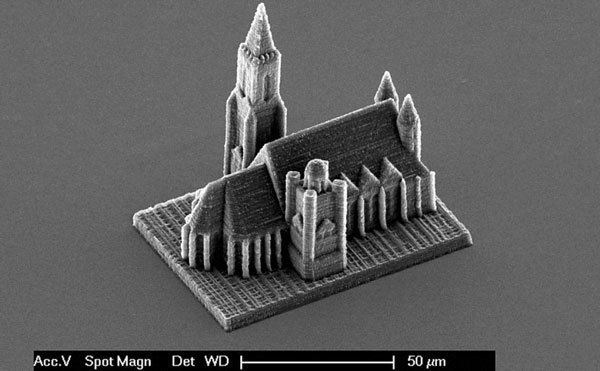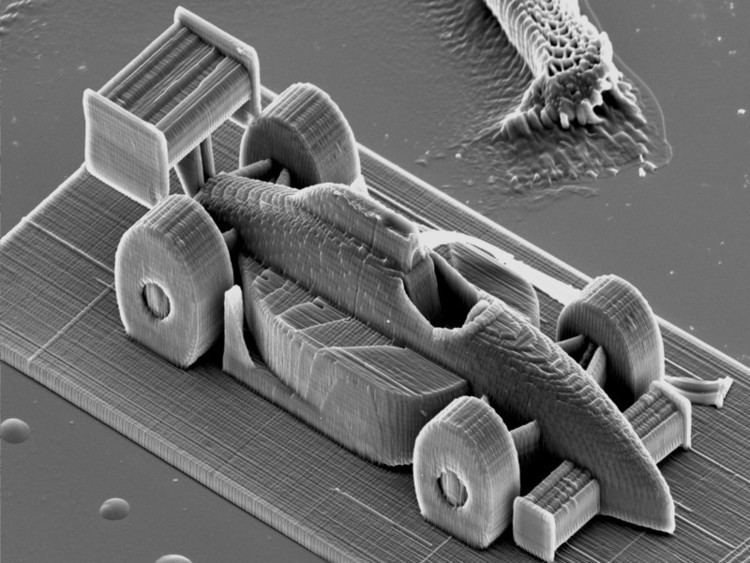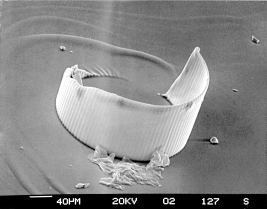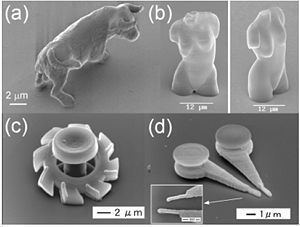 | ||
Multiphoton lithography (also known as direct laser lithography or direct laser writing) of polymer templates has been known for years by the photonic crystal community. Similar to standard photolithography techniques, structuring is accomplished by illuminating negative-tone or positive-tone photoresists via light of a well-defined wavelength. The fundamental difference is, however, the avoidance of reticles. Instead, two-photon absorption is utilized to induce a dramatic change in the solubility of the resist for appropriate developers.
Hence, multiphoton lithography is a technique for creating small features in a photosensitive material, without the use of complex optical systems or photomasks. This method relies on a multi-photon absorption process in a material that is transparent at the wavelength of the laser used for creating the pattern. By scanning and properly modulating the laser, a chemical change (usually polymerization) occurs at the focal spot of the laser and can be controlled to create an arbitrary three-dimensional periodic or non-periodic pattern. This method has been used for rapid prototyping of structures with fine features.

Two-photon absorption is a third-order with respect to the third-order optical susceptibility

It was found that polarization effects in laser 3D nanolithography can be employed to fine-tune the feature sizes (and corresponding aspect ratio) in the structuring of photoresists. This proves polarization to be a variable parameter next to laser power (intensity), scanning speed (exposure duration), accumulated dose, etc.


